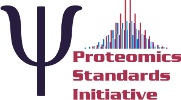New Controlled Vocabulary Terms
Cooperative interaction data to be annotated
Different controlled vocabulary terms were introduced to represent different aspects of cooperative interactions. The list below describes the different types of data that can be described for cooperative interactions using these new terms.
-There are two basic mechanisms underlying cooperativity in molecular interactions: allostery or pre-assembly.
-Either of these two mechanisms, or a combination of both, can mediate a cooperative effect of a binding event (including covalent post-translational modifications) on a subsequent interaction, referred to as the affected interaction.
-The outcome of this effect can be either positive (the affected interaction is augmented) or negative (the affected interaction is diminished).
-The effect can be quantified by the fold change of the affinity of a molecule (or a catalytic parameter of an enzyme) for a ligand in the absence, versus presence, of a second ligand or a covalent post-translational modification.
When allostery is the underlying mechanism, the following data can be annotated:
-the allosteric molecule, which specifies the molecule that is allosterically regulated.
-the allosteric effector, which specifies the ligand that elicits an allosteric response in the allosteric molecule upon binding to that molecule.
-the allosteric post-translational modification, which specifies the post-translational modification that elicits an allosteric response in the allosteric molecule upon addition to that molecule.
-the allosteric response, which specifies whether the allosteric perturbation elicits a change in affinity for a second ligand or a change in a catalytic parameter of an enzyme-catalysed reaction.
-the allosteric mechanism, which specifies whether the allosteric response results from a change in molecular structure or from a change in molecular dynamics in the allosteric molecule.
-the type of allostery, which specifies whether or not the allosteric ligand is chemically identical to the primary, orthosteric ligand.
When pre-assembly is the underlying mechanism, the following data can be annotated:
-the pre-assembly response, which specifies whether pre-assembly results in the generation of a functional continuous composite binding site spanning different components of the pre-formed complex, in alteration of the physicochemical properties of a functional binding site by covalent modification, thereby reducing or increasing its compatibility with its binding partner or in hiding of a functional binding site, or whether it pre-organises multiple discrete binding sites.
New CV terms and their relationships
-MI:1149 cooperative interaction: part of molecular interaction (MI:0000)
-MI:1150 affected interaction: is an interaction attribute name (MI:0664), part of cooperative interaction (MI:1149)
-MI:1151 participantRef: is a feature attribute name (MI:0668)
-MI:1152 cooperative effect value: is an interaction attribute name (MI:0664), part of cooperative interaction (MI:1149)
-MI:1153 cooperative effect outcome: part of cooperative interaction (MI:1149)
-MI:1154 positive cooperative effect: is an interaction attribute name (MI:0664), is a cooperative effect outcome (MI:1153)
-MI:1155 negative cooperative effect: is an interaction attribute name (MI:0664), is a cooperative effect outcome (MI:1153)
-MI:1156 cooperative mechanism: part of cooperative interaction (MI:1149)
-MI:1157 allostery: is an interaction attribute name (MI:0664), is a cooperative mechanism (MI:1156)
-MI:1158 pre-assembly: is an interaction attribute name (MI:0664), is a cooperative mechanism (MI:1156)
-MI:1159 allosteric molecule: is a biological role (MI:0500), is an interaction attribute name (MI:0664), part of cooperative interaction (MI:1149)
-MI:1160 allosteric effector: is a biological role (MI:0500), is an interaction attribute name (MI:0664), part of cooperative interaction (MI:1149)
-MI:1161 allosteric response: part of cooperative interaction (MI:1149)
-MI:1162 allosteric k-type response: is an interaction attribute name (MI:0664), is an allosteric response (MI:1161)
-MI:1163 allosteric v-type response: is an interaction attribute name (MI:0664), is an allosteric response (MI:1161)
-MI:1164 allosteric mechanism: part of cooperative interaction (MI:1149)
-MI:1165 allosteric change in structure: is an interaction attribute name (MI:0664), is an allosteric mechanism (MI:1164)
-MI:1166 allosteric change in dynamics: is an interaction attribute name (MI:0664), is an allosteric mechanism (MI:1164)
-MI:1167 allostery type: part of cooperative interaction (MI:1149)
-MI:1168 heterotropic allostery: is an interaction attribute name (MI:0664), is an allostery type (MI:1167)
-MI:1169 homotropic allostery: is an interaction attribute name (MI:0664), is an allostery type (MI:1167)
-MI:1170 pre-assembly response: part of cooperative interaction (MI:1149)
-MI:1171 composite binding site formation: is an interaction attribute name (MI:0664), is a pre-assembly response (MI:1170)
-MI:1172 altered physicochemical compatibility: is an interaction attribute name (MI:0664), is a pre-assembly response (MI:1170)
-MI:1173 binding site hiding: is an interaction attribute name (MI:0664), is a pre-assembly response (MI:1170)
-MI:1174 configurational pre-organization: is an interaction attribute name (MI:0664), is a pre-assembly response (MI:1170)
-MI:1175 allosteric post-translational modification: is a biological feature (MI:0252), is an interaction attribute name (MI:0664), part of cooperative interaction (MI:1149)
New CV terms and their definitions
-MI:1149 cooperative interaction: "A set of molecular binding events that influence each other either positively or negatively through allostery or pre-assembly. In this context, covalent post-translational modifications are considered as binding events. CV terms that are part of this term allow the description of cooperative interactions using the current PSI-MI schema." [PMID:18641616]
-MI:1150 affected interaction: "For an interaction that has a cooperative effect on a subsequent interaction, this term indicates which subsequent interaction is affected. The affected interaction is identified by referring to its interaction id." [PMID:18641616]
-MI:1151 participantRef: "Referring to a previously described interaction as a participant allows the description of ordered assembly of molecular complexes in PSI-MI2.5. When one of the components of the preformed complex has a feature, the participant-ref term indicates on which component this feature is located. The component is identified by referring to its participant id in the previous interaction." [PMID:17925023]
-MI:1152 cooperative effect value: "This value quantifies the cooperative effect of an interaction on a subsequent interaction. It is the fold change of the affinity or a catalytic parameter of a molecule for one ligand in the absence, versus presence, of a second ligand or a post-translational modification." [PMID:18706817]
-MI:1153 cooperative effect outcome: "For an interaction that has a cooperative effect on a subsequent interaction, this term indicates whether this effect is positive or negative, i.e. whether the subsequent interaction is augmented or diminished." [PMID:18706817]
-MI:1154 positive cooperative effect: "This term specifies that an interaction augments a subsequent interaction." [PMID:18706817]
-MI:1155 negative cooperative effect: "This term specifies that an interaction diminishes a subsequent interaction." [PMID:18706817]
-MI:1156 cooperative mechanism: "For an interaction that has a cooperative effect on a subsequent interaction, this term indicates the process that mediates this effect." [PMID:18641616]
-MI:1157 allostery: "Reciprocal energetic coupling between two binding events at distinct sites on the same molecule. The first binding event alters the binding or catalytic properties of the molecule for the second binding event." [PMID:18706817]
-MI:1158 pre-assembly: "A non-allosteric mechanism where the strength of an interaction depends on whether or not a particular molecular complex already exists." [PMID:18641616]
-MI:1159 allosteric molecule: "A molecule whose binding or catalytic properties at one site are altered by allosteric post-translational modification or binding of an allosteric effector at a distinct site. An allosteric molecule is identified by referring to its participant id." [PMID:18706817]
-MI:1160 allosteric effector: "A ligand that elicits an allosteric response upon binding to a target molecule." [PMID:18706817]
-MI:1161 allosteric response: "This term describes the effect of an allosteric binding event. It specifies which properties of the allosteric molecule are altered, i.e. whether the interaction alters either (a) binding or (b) catalytic properties of the allosteric molecule at a site distinct from the allosteric site." [PMID:18706817]
-MI:1162 allosteric k-type response: "An allosteric response in which the affinity of a molecule is altered." [PMID:18706817]
-MI:1163 allosteric v-type response: "An allosteric response in which catalysis (kcat or Vmax) of an enzyme is altered." [PMID:18706817]
-MI:1164 allosteric mechanism: "The process that mediates the allosteric response of a molecule upon allosteric post-translational modification or binding of an allosteric effector." [PMID:18706817]
-MI:1165 allosteric change in structure: "The allosteric mechanism where changes in the local structure of an allosteric molecule result in altered binding or catalytic properties." [PMID:18706817]
-MI:1166 allosteric change in dynamics: "The allosteric mechanism where changes in the local dynamics of an allosteric molecule result in altered binding or catalytic properties." [PMID:18706817]
-MI:1167 allostery type: "This term indicates the chemical relationship between the two ligands whose binding is allosterically coupled." [PMID:18706817]
-MI:1168 heterotropic allostery: "The type of allostery that occurs when the two ligands whose binding is allosterically coupled are not chemically identical." [PMID:18706817]
-MI:1169 homotropic allostery: "The type of allostery that occurs when the two ligands whose binding is allosterically coupled are chemically identical." [PMID:18706817]
-MI:1170 pre-assembly response: "This term describes the way in which preformation of a molecular complex has a non-allosteric cooperative effect on subsequent interactions of its components." [PMID:18641616]
-MI:1171 composite binding site formation: "The preformation of a complex results in the generation of a continuous binding site that spans more than one component of this complex. The functional binding site does not exist outside the context of the preformed complex." [PMID:18641616]
-MI:1172 altered physicochemical compatibility: "The addition of a PTM to an interaction interface affects the physicochemical compatibility of the binding site with its binding partner. This can either induce or enhance an interaction, or result in inhibition or even abrogation of an interaction. Multisite modification can mediate rheostatic regulation of the interaction." [PMID:22480932]
-MI:1173 binding site hiding: "The occurrence of overlapping or adjacent, mutually exclusive binding sites promotes competitive binding. When there is a large difference in affinity of the different sites or in local abundance of competitors, binding at one site results in hiding of the second site, thereby precluding it from interacting when the hiding molecule is present." [PMID:22480932]
-MI:1174 configurational pre-organization: "Multivalent ligands form multiple discrete interactions with one or more binding partners. An initial binding event can pre-organize other sites for binding. This reduces the degrees of freedom of these sites, thus reducing the entropic costs of their interactions. In addition, the combined strength of multiple interactions increases the enthalpic stability of each interaction (avidity effect). As a result of such effects, interactions of this kind can have a cooperative effect on subsequent interactions." [PMID:18641616]
-MI:1175 allosteric post-translational modification: "A post-translational modification that elicits an allosteric response upon addition to a target molecule. An allosteric post-translational modification is identified by referring to its feature id." [PMID:18706817]




